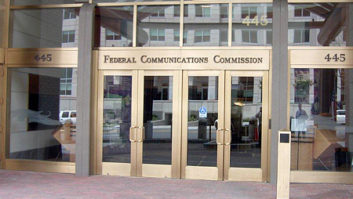SAN FRANCISCO National Public Radio, Harris and Kenwood USA are closer to finding out whether splitting a station’s digital audio signal into two channels will be practical.
Field testing began in August for the so-called “Tomorrow Radio” project on four FM stations: KALW in San Francisco, KKJZ in Long Beach, Calif., WETA in Washington and WNYC in New York.
The tests are notable for two reasons, representatives of the sponsor companies believe. They are the first station tests using Ibiquity Digital’s system conducted by non-Ibiquity employees or contractors. Also, they’re the first station tests using only commercial, off-the-shelf HD Radio transmission equipment.
Varied terrain
The tests were expected to end Sept. 12, after which Stan Salek of the consulting engineering firm Hammett & Edison is slated to evaluate the results and report on the findings. Mike Starling, NPR vice president of engineering and operations, hoped to submit the report to the DAB Subcommittee of the National Radio Systems Committee at its Oct. 1 meeting at the NAB Radio Show in Philadelphia.
Originally, the group had one station, KKJZ, lined up for the tests. Members decided to include more to see how the system performed in other types of terrain.
Each of the stations is using a common antenna, rather than separate antennas for the digital and analog signals. All use Harris ZHD transmitters and Harris Dexstar FM IBOC exciter with ePAL as the digital signal source.
The ePAL option, according to Harris, performs three main functions to enable configuration flexibility in an IBOC installation: synchronization and sample rate conversion to the analog signal, delayed audio bypass switching and digital audio distribution.
Ibiquity developed special HD Radio exciter and receiver software for the tests, the proponents said. While the RF modulation scheme remains the same, the audio coding was changed to allow for two channels.
Van ride
The tests began in August for KALW using a loaner Harris ZHD transmitter system.
The test van is equipped with a spectrum analyzer and two Kenwood pre-production HD Radio receivers. The first receiver is used for reference, a digital copy of the station’s signal, while the second picks up the supplemental audio channel, said Mike Bergman, director of research and development in digital broadcast, for Kenwood USA.
Using GPS receivers, the van will record time and location data points 10 times per second, once every 100 milliseconds.
Using a spectrum analyzer, participants will track the desired station signals as well as signals from adjacent channels, Starling said.
“If the receiver starts to fail, we may see a contributing or casual factor, whether it’s de-sensing” or something else, he said. De-sensing occurs when the receiver is overwhelmed because a nearby signal is stronger than the primary one.
If the signal experiences a certain amount of interference, the main channel would blend to analog, as normal in the Ibiquity system; but for the purposes of this test, under the same conditions, the supplemental channel blends to mute, participants said.
Participants want to see whether the supplementary digital audio channel still provides robust coverage when split from the main channel.
Torture test
By scaling back Ibiquity’s IBOC FM bitstream of 96 kilobits per second, theoretically a station could use the remaining bits to carve out the supplemental channel.
For example, initial KALW tests focused on running the main channel at 64 kbps, with the supplemental channel at 32 kbps. Initial data integrity looked good, participants said. Preliminary results of the analysis should be available by late September.
San Francisco’s hilly terrain presents interference issues and coverage challenges for FM stations. Starling called the city a “classic torture test for FM propagation,” noting that the early IBOC tests were performed in the city.
By contrast, the terrain of Long Beach is well-known to Kenwood; it is the location of the company’s U.S. headquarters. The Tomorrow Radio system is being tested in the Los Angeles Basin, with its valleys and canyons. Starling called it a “challenging propagation market.” KKJZ will use the same loaner Harris transmitter system as used by KALW.
By the end of August, tests are due to begin at WETA.
All stations involved except WETA are using common amplification to develop the hybrid signal; WETA is using separate amplification, said Dave Agnew, Harris’ FM applications engineer. WETA has HD Radio equipment in place; it has long been an Ibiquity test station.
The tests will conclude in September at WNYC. The station will participate in the Tomorrow Radio tests and permanently convert to HD Radio at the same time. WNYC is operating two Z10CD transmitters in a main/alternate configuration. As part of WNYC’s conversion, it will upgrade its main Z10CD to a Z16HDC operating in common amplification mode. The alternate Z10CD will continue to be used as an analog back-up and will be upgraded to a Z16HDC in the future.
Participants said Ibiquity’s change of codecs did not affect the project.









